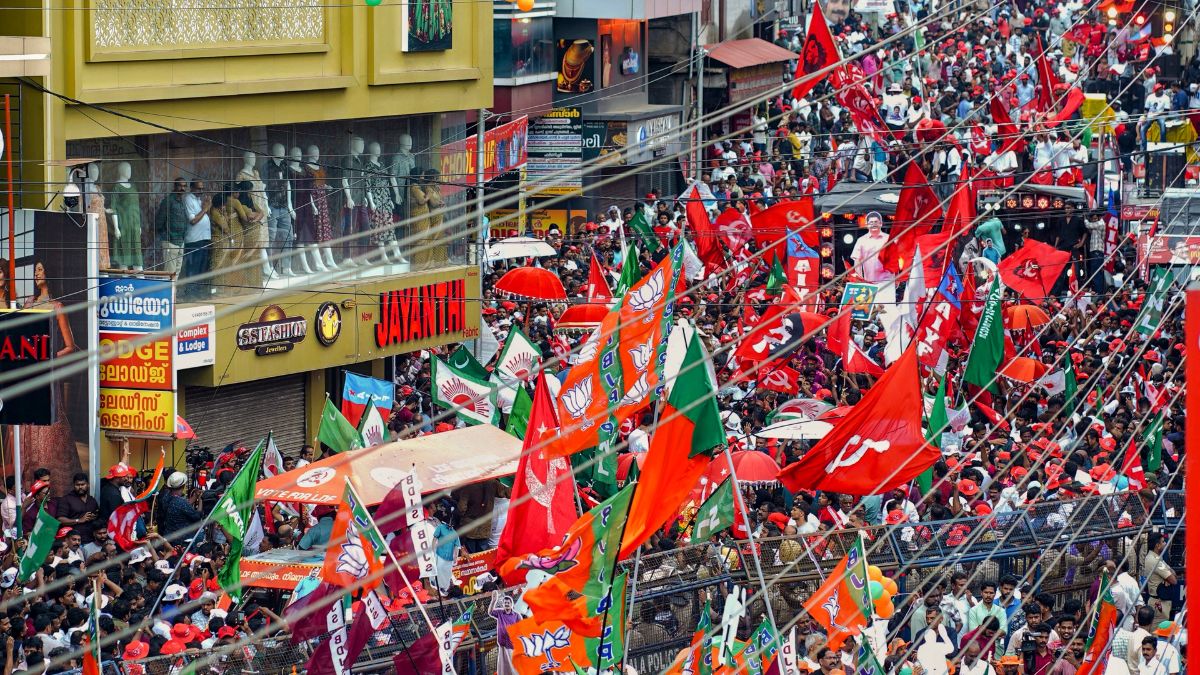Change strategy or lose: How bypolls set off alarm bells for losing parties ahead of the upcoming elections
 LDF, UDF and BJP leaders make their final appeals to voters as campaigning concludes for the Nilambur assembly bypoll, in Malappuram | PTI
LDF, UDF and BJP leaders make their final appeals to voters as campaigning concludes for the Nilambur assembly bypoll, in Malappuram | PTI
If the assembly bypoll results are any indicator, the Aam Aadmi Party has reason to cheer, having suffered a humiliating loss in the Delhi elections. The party has won two seats —Ludhiana West in Punjab and Visavadar in Gujarat — both previously held by it, signalling that it is still in the game.
A similar trend was seen with the TMC in West Bengal, where it retained the Kaliganj seat. Its candidate, Alifa Ahmed, won with a margin of over 50,000 votes; the seat was previously held by her father.
The BJP retained the Kadi seat, a reserved constituency, as its candidate, Rajendra Chavda, won with a margin of 40,000 votes over his Congress rival.
However, the ruling CPI(M) government in Kerala was left red-faced as the party lost the Nilambur seat to Congress candidate Aryadan Shoukath by over 11,000 votes. The seat went to bypoll after the incumbent, PV Anvar—backed by the Left parties—resigned. He contested again, this time as a Trinamool Congress candidate, but came third. The CPI(M)’s official candidate, M Swaraj, failed to secure victory.
The Nilambur seat falls under the Wayanad Lok Sabha constituency, which is represented by Priyanka Gandhi. The CPI(M)’s loss has provided a morale boost to the main opposition, the Congress, ahead of the assembly polls due next year.
Though the tenure of the victorious candidates will be less than a year, these bypolls offer a strong indication of the relative strengths of major parties and the adjustments they may need to make ahead of the upcoming elections. Nilambur was the only seat the Congress won, having failed to make inroads in the other constituencies it contested. This result should serve as a reminder to the party’s strategists that it needs to revamp its state units and curb internal infighting.
On the other hand, the AAP framed its two victories as a sign of AAP convenor Arvind Kejriwal’s “sweeping return to national politics.”
Punjab’s AAP in-charge, Manish Sisodia, declared: “The AAP has won the semi-final in Punjab with a resounding mandate. Now, it’s time for the final.” The state goes to the polls in 2027.
The AAP, reeling under the pressure of its loss in Delhi, now has reason to respond to the BJP. In BJP stronghold Gujarat, AAP secured a significant win as its candidate, Gopal Italia, defeated the BJP’s nominee in Visavadar.
But the big question now for the party is: Who will it nominate to the Rajya Sabha? Its Ludhiana West candidate, Sanjeev Arora, is the sitting Rajya Sabha MP from Punjab. Following his victory in the bypoll, he is expected to vacate the seat, creating a vacancy. There is strong speculation that Kejriwal could be nominated to the Rajya Sabha, although the party has denied this, saying the Political Affairs Committee will take the final decision.
For a party attempting to build a national presence, its choice for the Rajya Sabha will be closely watched.
The other bypolls—seen as semi-finals ahead of next year’s assembly elections—took place in West Bengal and Kerala. While the ruling CPI(M) has reason for concern, the Mamata Banerjee government in Bengal scored a decisive win in Kaliganj. However, this contest also poses a challenge for the TMC, as the BJP candidate came in second, pushing the joint Congress-Left candidate to third place. If this result is any indication, next year’s contest could be much tighter.
These bypoll results should compel the losing parties to return to the drawing board, assess their shortcomings, and make necessary corrections.
India